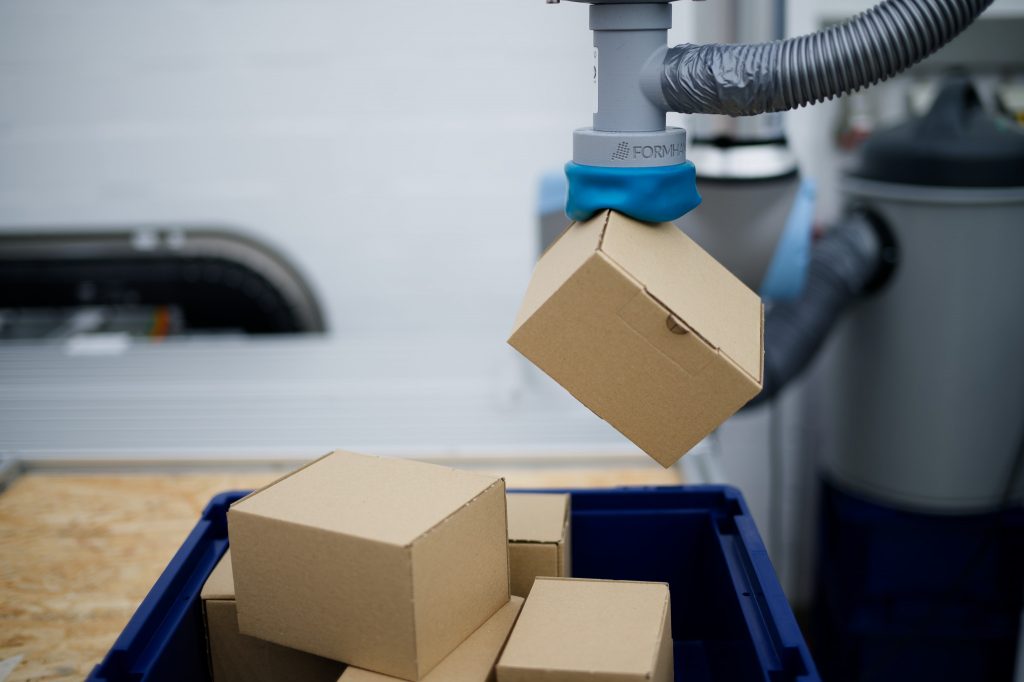Bin picking, the process of automatically selecting and handling objects from a container, is a fundamental task in automation, but it’s often reliant on expensive, camera-based systems. In my latest research, I introduced a game-changing alternative: Force-Based Object Dimension Estimation. This method eliminates the need for cameras, instead leveraging force and torque data to estimate the size and dimensions of objects—bringing a new level of cost-efficiency and flexibility to industrial automation.
The Challenge with Camera-Based Systems
Traditional bin-picking systems rely heavily on cameras to determine the size, shape, and position of objects inside a container. While effective, these systems can be costly and require expert setup and maintenance. They also struggle with certain scenarios, like environments with poor lighting or highly reflective objects, which can interfere with visual sensors.
To overcome these limitations, we explored a camera-less approach, using force-torque sensors to estimate object dimensions based on the feedback received during interaction. This approach not only reduces hardware costs but also simplifies the system’s overall setup, making it more accessible to a wider range of industries.
How Does Force-Based Dimension Estimation Work?
The core idea behind this method is simple: when a robot grips an object, the force and torque data it generates can be used to infer the object’s dimensions. By rotating the object and probing it at different angles, the robot gradually constructs a dimensional profile, which is then used to calculate the object’s size.
The process begins with the robot detecting an object in the bin. Once the object is grasped, the robot measures the distance between the gripper and various surfaces by applying controlled forces. This allows the system to estimate the object’s bounding box, which represents its dimensions in space.
Real-World Testing and Results
We validated this approach using real-world objects like boxes, cans, and tennis balls, each of which presents a unique challenge for dimension estimation. The results were impressive: our force-based system was able to estimate object dimensions with a margin of error between 8% and 18%, depending on the object’s shape and the precision of the rotational steps.
While not as precise as high-end camera systems, the force-based approach provides a practical and affordable alternative that’s particularly useful in environments where camera-based systems may struggle or be cost-prohibitive.
Why This Matters for Automation
By relying on tactile feedback rather than visual input, this method opens up new possibilities for bin-picking in industries where cost, environmental factors, or object complexity pose challenges for camera-based systems. Moreover, the system is versatile—it can be integrated into existing automation lines without requiring additional, complex hardware setups like specialized cameras or lighting rigs.
The method also has the potential to make bin-picking systems more robust. For instance, it can handle objects that are difficult for cameras to detect, such as transparent or highly reflective materials, and perform well even in poor lighting conditions.
Looking Ahead
This research is just the beginning. As we continue to refine the force-based dimension estimation technique, we expect to achieve even greater accuracy and efficiency, further bridging the gap between affordability and precision in industrial automation. Future developments could integrate this system with advanced algorithms to further improve object handling, making it a vital tool for industries looking to streamline their bin-picking operations.
The potential impact of this approach goes beyond cost savings—it’s about creating flexible, adaptive systems that can operate reliably in a variety of conditions. By moving away from camera dependence, we’re opening up new frontiers in the world of robotics and automation, bringing high-tech solutions to a broader range of industries.

